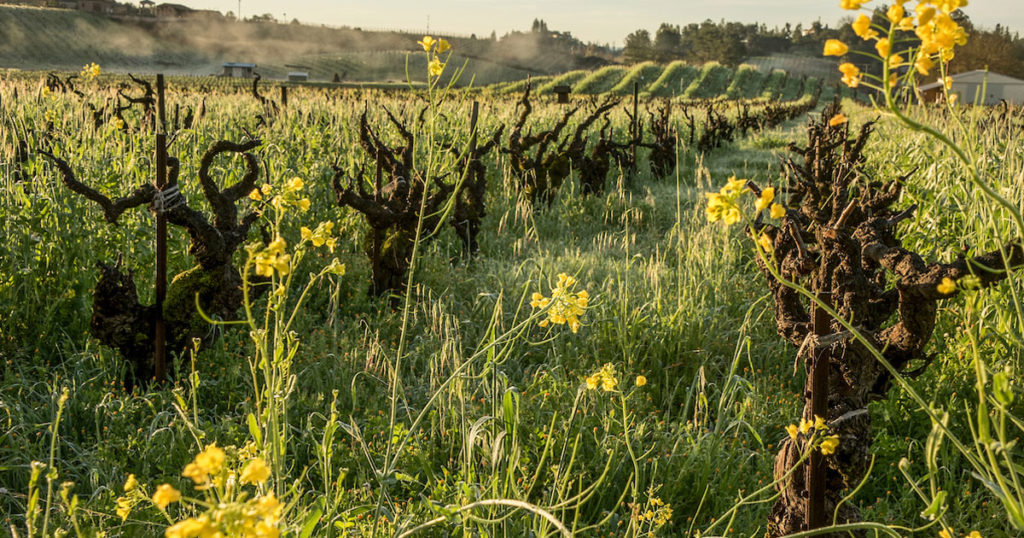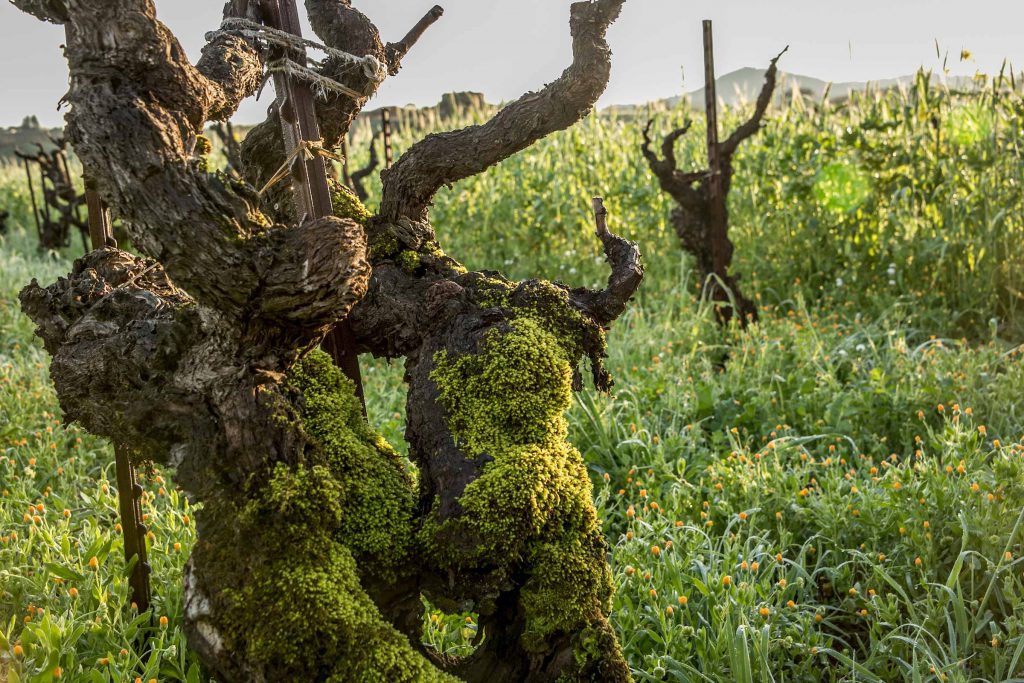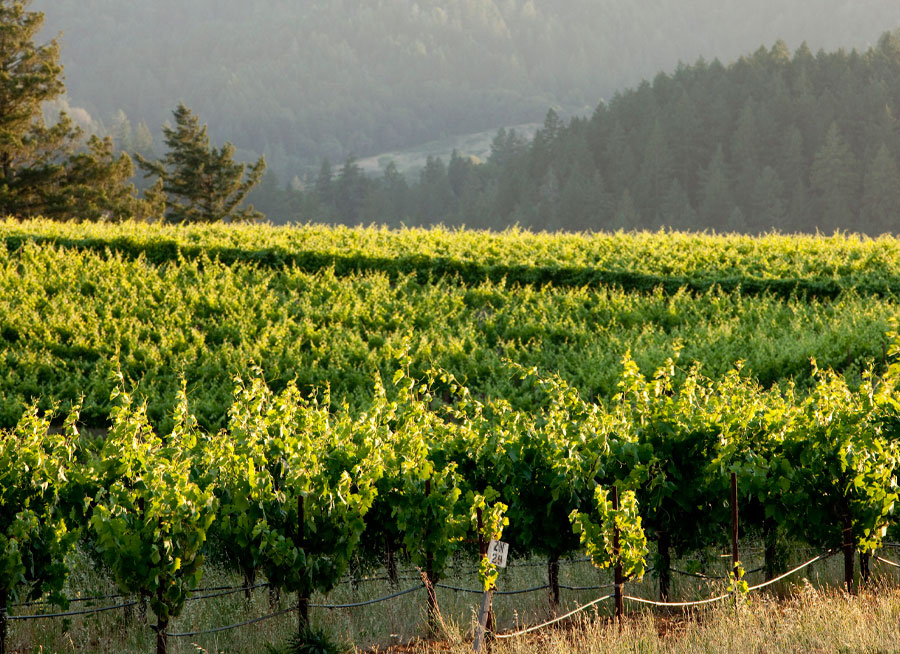Modern Field Blend Wine at Lytton Springs
Blog Post
Making wine from old-vine vineyards often means working with field blends. Our 100-plus-year-old zinfandel vines are interplanted with 23 complementary grape varieties, a textbook example of an old-vine field blend. Since 1972 Ridge has produced a quintessential example of Dry Creek Valley zinfandel from this site.
The History of Field Blends at Lytton East
The Mazonni family, with help from the Simi brothers, planted the oldest patch of field blend vineyard at Lytton East in 1901. However, we can’t be certain of their original motivation or even the names of the farmers who made the decisions and put the vines in the ground.
There was some sense of order, such as red fleshed teinturier varieties being planted as every fourth vine of every fourth row, but the choice of vines is exotic and even a bit mysterious. There were few written records during the era and with Prohibition stifling wine production for thirteen years, much of the oral tradition has been lost to time.
What we are certain of is the resulting quality of wine that’s been produced from this vineyard over several decades, with Ridge making our first Lytton Springs bottling in 1972. But what happens as these vineyards begin to die off and need to be replanted? What if an expansion of the vineyard becomes necessary to grow production or make up for smaller yields of old vines?

Returning to Field Blend Winemaking Practices
As late as the mid-1990’s, zinfandel, petite sirah, and carignane were planted in single variety patches at Lytton Springs and Geyserville, in order to meet increased production demand. Despite sticking to single variety planting, the production team at Ridge was considering the possibility of planting to a field blend once more.
Led by Senior VP of Vineyard Operations David Gates, the “New Patch” at Geyserville was planted, mimicking the “Old Patch” of field-blend vineyard that was planted in 1882 by A. Boutin. This six acre parcel was brought to fruition in 2000 and is comprised of 55% zinfandel, 14% petite sirah, and 14% carignane. The remaining 17% is a hodgepodge of varieties selected for their color, structure, aromatics, or acidic qualities: alicante bouschet, grenache noir, mataro, syrah, counoise, peloursin, petite boushcet, grenache blanc, roussanne, picpoul blanc, and tannat. The “New Patch” was harvested for the first time in 2004 and the high quality of the fruit was clear. It made the final blend of Geyserville and has remained part of the blend ever since.

New Wine, Old Traditions: Geyserville & Lytton Springs Vintages
Driven by the successful “New Patch” at Geyserville, subsequent plantings at Lytton Springs have also been done as field blends. In 2008, David Gates and his team planted an eight acre parcel to a mix of 60% zinfandel, 18% carignane, and 10% petite sirah. This time the remaining 12% consisted of syrah, tempranillo, cinsault, alicante bouchet, grenache noir, grenache blanc, burger, counoise, peloursin, mataro, tannat, and picpoul blanc.
The resulting success of this “New Patch” at Lytton Springs, having made the Lytton Springs blend since the first harvest as well, solidified the commitment to using field blends for all subsequent plantings. Like a kitchen spice rack, even the seemingly innocuous additions of certain grapes will add interesting notes of flavor to the finished wine.

Looking to the Future of Field Blends
In 2013, a small three-acre patch of vineyard was planted to a mere 35% zinfandel, along with 35% carignane and a 30% mix of 22 different varieties, many of which were the red fleshed teinturier. Though this small patch was created as an experiment in using a smaller percentage of zinfandel, our Viticulture Team had a different idea in mind: using the teinturier varieties as dots on the vineyard map, they wrote out their names in Morse code.
The future stewards of the vineyard will be left with no doubt about the intentions of planting mixed varieties, as the quality will be well documented. But unlike the farmers of over a century ago, the names of the men who planted it will survive for as long as the vineyard, as telegraphy meets viticulture in row upon row of vitis vinifera.
Wait!
In order to qualify for user related discounts, you must log in before proceeding with checkout. Click the button below to log in and receive these benefits, or close the window to continue.
Log In